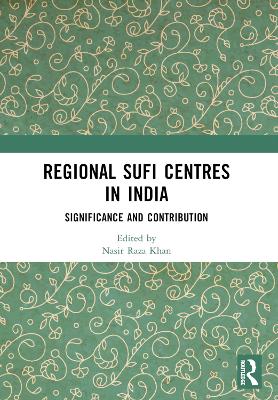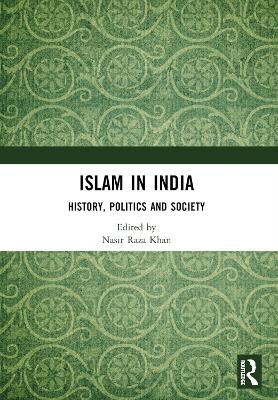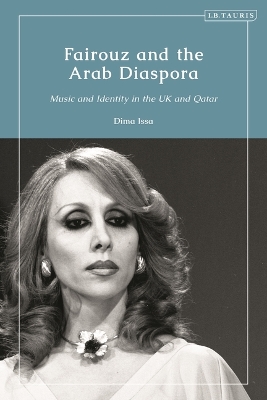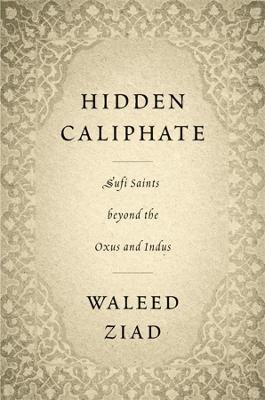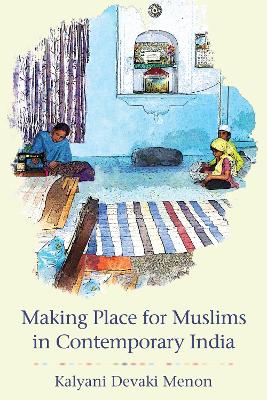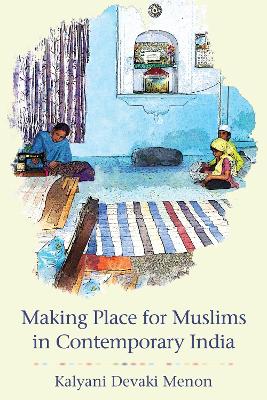Hindu Sufis of South Asia
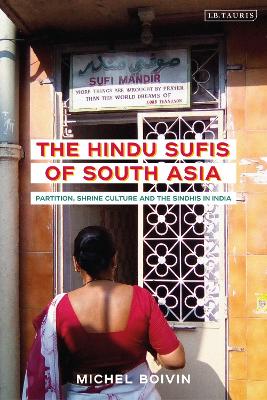 portes grátis
portes grátis
Hindu Sufis of South Asia
Partition, Shrine Culture and the Sindhis in India
Boivin, Dr Michel
Bloomsbury Publishing PLC
07/2021
256
Mole
Inglês
9780755643691
15 a 20 dias
358
Descrição não disponível.
Acknowledgements
Table of maps, charts, and photos
Table of annexes
introduction
Mapping the issue: From Sindh to the Sindhicate area
Sufism and the Sufi culture of Sindh
The Sufi and Hindu Encounter as an issue in Social Sciences
Hinduism and Sufism in the Sindhicate area
Chapter 1
the religious market in sindh ON the eve of partition
Social structure and religious belonging in colonial Sindh
The Amils, the intelligentsia, and the objectification of Sufism
The recomposition of the religious scene and thedarbar culture
The birth of a middle class and the emergence of Hindu Sufi paths
Partition in Sindh
Conclusion
Chapter 2
the new settlement and the making of the darbars
Building the darbars in India
Authority, the legitimization process, and succession
Naming the shrine in India as a first step
Sacralising the new territory
Conclusion
Chapter 3
Sufi poetry and the production of the mystical space...
Bhakti and Vedanta
The classical Sufi corpus
The modern Sufi corpus
The vernacular ideology of the wahdat-e wujud
Hindu references in the Sufi Poetry
Conclusion
Chapter 4
alternative Sufi structures as networking india and beyond...
The darbar and its extensions
The samadhias an alternative Sufi structure
The Sufi mandir and the pilgrimage to Bijapur
Mulchand Kafi
Conclusion
Chapter 5
rituals as connecting spaces and community
Iconography as an idiom of transference
Initiation and meditation
Daily rituals and informal Sufi practices
Annual fairs: From urs to versi
The 'Darazi satsangs'
Conclusion
Chapter 6
the transmission of the sufi legacy in india
Ram Panjwani (1911-1987) and the challenge of post-partition transmission
Non-poetic chains for the transmission of Sufism
Other networks of transmission
The role of the diaspora in the transmission of the Sufi legacy
Conclusion
Chapter 7
the sufi paths and the Hindus of Sindh in Pakistan
Sindhi Encounters between Sufism and Hinduism
The Hindus and the Sehwan system
The "Hindu dargah" of Tando Ahmad Khan, or framing a new category
Neither Hindu, nor Muslim: The Sufi-related cults of the Sindhi Dalits
Conclusion
GENERAL Conclusion
Glossary
Annexes
1. Abstracts of Sufi poetry in Sindhi and English translation
2. Hindu Sufis'silsilas in Sindh
Bibliography
Index
Table of maps, charts, and photos
Table of annexes
introduction
Mapping the issue: From Sindh to the Sindhicate area
Sufism and the Sufi culture of Sindh
The Sufi and Hindu Encounter as an issue in Social Sciences
Hinduism and Sufism in the Sindhicate area
Chapter 1
the religious market in sindh ON the eve of partition
Social structure and religious belonging in colonial Sindh
The Amils, the intelligentsia, and the objectification of Sufism
The recomposition of the religious scene and thedarbar culture
The birth of a middle class and the emergence of Hindu Sufi paths
Partition in Sindh
Conclusion
Chapter 2
the new settlement and the making of the darbars
Building the darbars in India
Authority, the legitimization process, and succession
Naming the shrine in India as a first step
Sacralising the new territory
Conclusion
Chapter 3
Sufi poetry and the production of the mystical space...
Bhakti and Vedanta
The classical Sufi corpus
The modern Sufi corpus
The vernacular ideology of the wahdat-e wujud
Hindu references in the Sufi Poetry
Conclusion
Chapter 4
alternative Sufi structures as networking india and beyond...
The darbar and its extensions
The samadhias an alternative Sufi structure
The Sufi mandir and the pilgrimage to Bijapur
Mulchand Kafi
Conclusion
Chapter 5
rituals as connecting spaces and community
Iconography as an idiom of transference
Initiation and meditation
Daily rituals and informal Sufi practices
Annual fairs: From urs to versi
The 'Darazi satsangs'
Conclusion
Chapter 6
the transmission of the sufi legacy in india
Ram Panjwani (1911-1987) and the challenge of post-partition transmission
Non-poetic chains for the transmission of Sufism
Other networks of transmission
The role of the diaspora in the transmission of the Sufi legacy
Conclusion
Chapter 7
the sufi paths and the Hindus of Sindh in Pakistan
Sindhi Encounters between Sufism and Hinduism
The Hindus and the Sehwan system
The "Hindu dargah" of Tando Ahmad Khan, or framing a new category
Neither Hindu, nor Muslim: The Sufi-related cults of the Sindhi Dalits
Conclusion
GENERAL Conclusion
Glossary
Annexes
1. Abstracts of Sufi poetry in Sindhi and English translation
2. Hindu Sufis'silsilas in Sindh
Bibliography
Index
Este título pertence ao(s) assunto(s) indicados(s). Para ver outros títulos clique no assunto desejado.
Acknowledgements
Table of maps, charts, and photos
Table of annexes
introduction
Mapping the issue: From Sindh to the Sindhicate area
Sufism and the Sufi culture of Sindh
The Sufi and Hindu Encounter as an issue in Social Sciences
Hinduism and Sufism in the Sindhicate area
Chapter 1
the religious market in sindh ON the eve of partition
Social structure and religious belonging in colonial Sindh
The Amils, the intelligentsia, and the objectification of Sufism
The recomposition of the religious scene and thedarbar culture
The birth of a middle class and the emergence of Hindu Sufi paths
Partition in Sindh
Conclusion
Chapter 2
the new settlement and the making of the darbars
Building the darbars in India
Authority, the legitimization process, and succession
Naming the shrine in India as a first step
Sacralising the new territory
Conclusion
Chapter 3
Sufi poetry and the production of the mystical space...
Bhakti and Vedanta
The classical Sufi corpus
The modern Sufi corpus
The vernacular ideology of the wahdat-e wujud
Hindu references in the Sufi Poetry
Conclusion
Chapter 4
alternative Sufi structures as networking india and beyond...
The darbar and its extensions
The samadhias an alternative Sufi structure
The Sufi mandir and the pilgrimage to Bijapur
Mulchand Kafi
Conclusion
Chapter 5
rituals as connecting spaces and community
Iconography as an idiom of transference
Initiation and meditation
Daily rituals and informal Sufi practices
Annual fairs: From urs to versi
The 'Darazi satsangs'
Conclusion
Chapter 6
the transmission of the sufi legacy in india
Ram Panjwani (1911-1987) and the challenge of post-partition transmission
Non-poetic chains for the transmission of Sufism
Other networks of transmission
The role of the diaspora in the transmission of the Sufi legacy
Conclusion
Chapter 7
the sufi paths and the Hindus of Sindh in Pakistan
Sindhi Encounters between Sufism and Hinduism
The Hindus and the Sehwan system
The "Hindu dargah" of Tando Ahmad Khan, or framing a new category
Neither Hindu, nor Muslim: The Sufi-related cults of the Sindhi Dalits
Conclusion
GENERAL Conclusion
Glossary
Annexes
1. Abstracts of Sufi poetry in Sindhi and English translation
2. Hindu Sufis'silsilas in Sindh
Bibliography
Index
Table of maps, charts, and photos
Table of annexes
introduction
Mapping the issue: From Sindh to the Sindhicate area
Sufism and the Sufi culture of Sindh
The Sufi and Hindu Encounter as an issue in Social Sciences
Hinduism and Sufism in the Sindhicate area
Chapter 1
the religious market in sindh ON the eve of partition
Social structure and religious belonging in colonial Sindh
The Amils, the intelligentsia, and the objectification of Sufism
The recomposition of the religious scene and thedarbar culture
The birth of a middle class and the emergence of Hindu Sufi paths
Partition in Sindh
Conclusion
Chapter 2
the new settlement and the making of the darbars
Building the darbars in India
Authority, the legitimization process, and succession
Naming the shrine in India as a first step
Sacralising the new territory
Conclusion
Chapter 3
Sufi poetry and the production of the mystical space...
Bhakti and Vedanta
The classical Sufi corpus
The modern Sufi corpus
The vernacular ideology of the wahdat-e wujud
Hindu references in the Sufi Poetry
Conclusion
Chapter 4
alternative Sufi structures as networking india and beyond...
The darbar and its extensions
The samadhias an alternative Sufi structure
The Sufi mandir and the pilgrimage to Bijapur
Mulchand Kafi
Conclusion
Chapter 5
rituals as connecting spaces and community
Iconography as an idiom of transference
Initiation and meditation
Daily rituals and informal Sufi practices
Annual fairs: From urs to versi
The 'Darazi satsangs'
Conclusion
Chapter 6
the transmission of the sufi legacy in india
Ram Panjwani (1911-1987) and the challenge of post-partition transmission
Non-poetic chains for the transmission of Sufism
Other networks of transmission
The role of the diaspora in the transmission of the Sufi legacy
Conclusion
Chapter 7
the sufi paths and the Hindus of Sindh in Pakistan
Sindhi Encounters between Sufism and Hinduism
The Hindus and the Sehwan system
The "Hindu dargah" of Tando Ahmad Khan, or framing a new category
Neither Hindu, nor Muslim: The Sufi-related cults of the Sindhi Dalits
Conclusion
GENERAL Conclusion
Glossary
Annexes
1. Abstracts of Sufi poetry in Sindhi and English translation
2. Hindu Sufis'silsilas in Sindh
Bibliography
Index
Este título pertence ao(s) assunto(s) indicados(s). Para ver outros títulos clique no assunto desejado.

